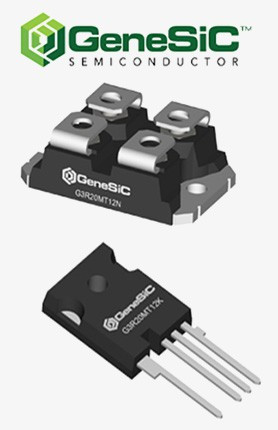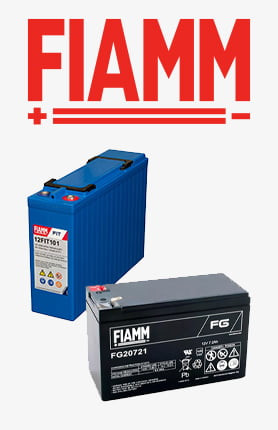Energy storage
Categories
| Image | View the product | No. Manufacturer | ||||
|---|---|---|---|---|---|---|
| picture_as_pdf |
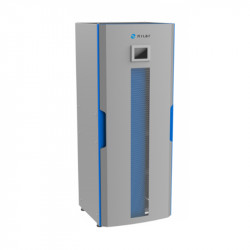
|
NILAR | NILAR EC Cabinets | SEE IT | -- | On Order |
| picture_as_pdf |
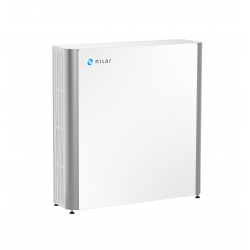
|
NILAR | NIRA EC HOME BOX | SEE IT | -- | On Order |
| picture_as_pdf |
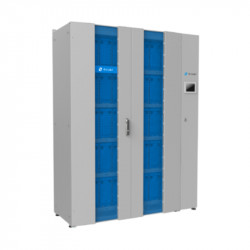
|
NILAR | NIRA EC Racks | SEE IT | -- | On Order |
| picture_as_pdf |
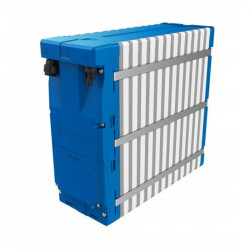
|
NILAR | NILAR EC BATTERY PACKS | SEE IT | -- | On Order |
| -- |

|
DACPOL | HOME ENERGY STORAGE ESS | SEE IT | -- | On Order |
| picture_as_pdf |
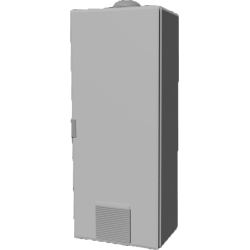
|
DACPOL | ENERGY STORAGE NMC | SEE IT | -- | On Order |
| picture_as_pdf |
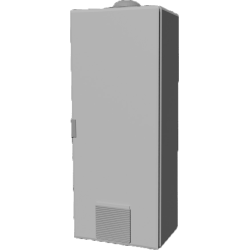
|
DACPOL | ENERGY STORAGE LFP | SEE IT | -- | On Order |
| picture_as_pdf |

|
DACPOL | Battery Pack for Vehicles | SEE IT | -- | On Order |
| picture_as_pdf |
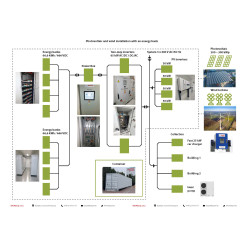
|
DACPOL | Photovoltaic and wind installation with an energy bank | SEE IT | -- | On Order |
Electrochemical batteries, also known as accumulators, allow energy to be stored in an easily recoverable form. The advantages of accumulators include a high value of the energy density parameter. Energy density is the unit amount of stored electrical energy, which can be presented volumetrically or by mass. The disadvantages of using accumulators include their self-discharge, wear manifested by changes in parameters – the so-called aging of the battery, long charging time, the influence of temperature on the accumulator, and in the case of some technical solutions, a short lifespan.
Two types of accumulators are used in energy storage solutions: lead-acid and lithium-ion.
Types of energy storage
Lead-acid accumulators achieve an efficiency of around 70%. They are characterized by low cost, a simple charging system, and the ability to withstand short-term loads with high currents. This causes them to be used in uninterruptible power supply (UPS) systems. A significant disadvantage is their short lifespan (about 1000 charge-discharge cycles) and their construction. In lead-acid accumulators, the electrolyte is in a liquid state, which may cause leaks and requires electrolyte replenishment. To mitigate this problem, lead-acid accumulators are made as maintenance-free:
- SLA – Sealed Lead Acid – sealed lead-acid batteries
- VRLA – Valve Regulated Lead – Acid – lead-acid batteries with regulation valves
They are produced using two technologies:
- Gel batteries, in which the aqueous sulfuric acid solution mixed with silica has a gel consistency, and this mixture acts as the electrolyte. However, this solution has a disadvantage in the form of limited discharge with high currents, which causes them to be less often used in high-power systems.
- AGM (Absorbed Glass Mat) batteries, in which the electrolyte is absorbed in a separator made of porous glass fiber mat.
Lithium-ion (Li-ion) accumulators achieve an efficiency of around 94%. These cells are among the lightest, which is why they are used in electronic equipment. Over the years, they have started to be used in electric vehicles. The accumulators used in electric vehicles are more durable (with a lifespan reaching several decades, which in terms of charge-discharge cycles can reach up to 1800 cycles) than their electronic counterparts and are equipped with cooling and heating systems. These cells can be rapidly charged from 0 to 80% in 15–30 minutes without significant impact on their lifespan. Due to advances in electromobility, lithium-ion accumulators are therefore considered as stationary energy storage solutions for renewable energy installations, which are characterized by irregular and unstable operation.
Nickel-metal hydride (NiMH) accumulators achieve efficiencies up to 92%, with a lifespan of up to 2000 charge-discharge cycles. The most important advantage of these cells is that they do not contain toxic cadmium. These cells are characterized by high energy density, capacity, and reduced memory effect. Their disadvantage is the inability to deliver high currents. NiMH accumulators are prone to self-discharge; however, manufacturers are increasingly developing the technology, reducing the value of self-discharge.
Reactive power compensation using energy banks
Uninterruptible power supply (UPS) systems are used to power important consumers in case of power failure from the grid or to protect sensitive elements from disturbances from the grid.
In UPS systems, capacitors are installed, which causes the power drawn from the grid to include not only active power but also capacitive reactive power. Additionally, newer design solutions use power factor correction (PFC) systems that reduce higher harmonic content and thus reduce reactive power consumption. This solution translates into increasing the power factor cosφ at full load. Another solution is the use of a phase shifter in the input circuit, which causes the capacitive input power to be reduced to zero.
How is an electric energy storage system built?
In the case of an energy storage system, the following components can be distinguished:
- a bidirectional converter – a DC/AC and AC/DC converter,
- a battery bank – a battery of chemical accumulators,
- a battery management system (BMS) controller,
- a programmable controller – its purpose is to manage algorithms,
- a supervision and visualization system GUI (Graphic User Interface) – a tool enabling the user to supervise and control the storage installation,
- auxiliary elements providing connection to the grid – installation metering or e.g., an isolation transformer.
An element that deserves detailed discussion is the bidirectional converter. It is a DC/AC and AC/DC converter, whose task is to control the battery charging and discharging process, as well as the energy exchange between the power grid and the storage system. The converter's task is to ensure appropriate voltage parameters and, in case of overload, an appropriate peak current. This system must have the ability to work synchronously with the grid, and in case of a blackout, it should provide backup operation. Additionally, the converter must “take care” of the battery, i.e., charge according to appropriate characteristics to avoid overcharging, prevent battery overheating, and protect against thermal runaway. This converter should be able to communicate with the battery management system (BMS) and should provide galvanic isolation of the system, e.g., by equipping the system with an output transformer.
Photovoltaics – energy storage systems that increase its profitability
A solution that increases the profitability of PV installations is energy storage systems. Photovoltaics equipped with these devices, instead of feeding excess generated current to the grid, accumulates it in batteries such as nickel-metal hydride (Ni-MH) or increasingly used lithium-ion (Li-ion) batteries. This allows the energy to be used at any time, avoiding inconvenient prosumer settlement rules. An energy storage system for photovoltaics makes a building equipped with such a combination independent of the power grid. Using the electricity in this case is truly free.
What requirements does photovoltaics set? – energy storage for PV installations
Batteries selected for PV installations should be adapted to the specific requirements occurring in systems like photovoltaics. The energy storage systems offered by DACPOL must primarily be chosen according to capacity. It should be matched to the total power of the installation. It is generally assumed that 1-1.5 kWh of capacity should correspond to 1 W kWp of the installation.
The second important parameter is power, which determines how many devices the energy storage system can power simultaneously. Photovoltaics are selected based on the building’s energy demand. The same approach should be used for batteries so that they can be used not only to accumulate current from renewable energy sources installations but also as backup power.
Equally important is the efficiency and performance of accumulators. In residential energy storage systems available at DACPOL, the following batteries are installed:
- lithium-ion batteries, characterized by the highest efficiency,
- nickel-metal hydride batteries, with somewhat lower efficiency.
Energy storage systems equipped with these batteries ensure efficient and reliable operation of photovoltaic systems and the devices powered by them.
Energy storage for photovoltaics and lead-acid accumulators
Energy storage systems equipped with lead-acid accumulators should not be used in combination with photovoltaics. They have a low lifespan due to low resistance to frequent charge cycles. Additionally, they quickly lose capacity at high temperatures and have relatively large sizes, causing high-power energy storage systems to occupy a lot of space.

